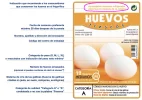BookGirl305
Active Member
- Time of past OR future Camino
- Ingles (after Covid)
I see a lot of references to "bring along a yogurt, cheese, chorizo, milk", etc in your pack." Buy the night before for breakfast" and the like, which I can see for a couple of hours but not buying and storing for 24 hours or more.
In the US, all of those items require refrigeration for food safety. Is there different shelf stable packaging in Spain or do we store things differently in the US than the rest of the world?
In the US, all of those items require refrigeration for food safety. Is there different shelf stable packaging in Spain or do we store things differently in the US than the rest of the world?






























